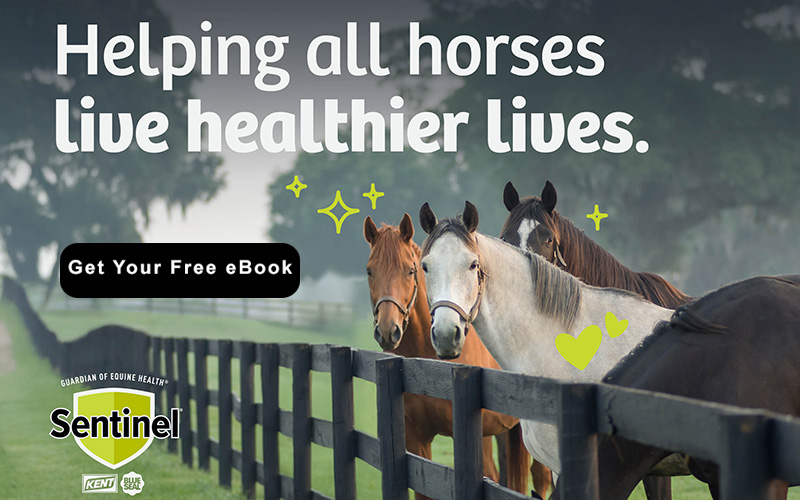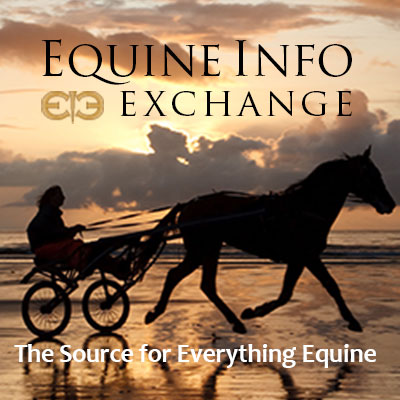Health & Education
We all want the best care possible for our horses. The Heath & Education section covers both Learning Institutions, Organizations as well as many sources for equine assistance including Veterinarians and Farriers.
For those who want a to formally study horses, the Education section includes College Riding, Equine Studies, and Veterinary Schools. Learn about the wide variety of horses in the Horse Breeds section. Supplements and Treatments Therapy are also included in the section.
Everyone can learn from Fine Art and there are some specialty Museums that might surprise you.
Horses as a therapy partner enrich the lives of the disabled. These facilities are listed in our Therapeutic Riding section. To help children and young adults build confidence and grow emotionally, please see the resources available on the Youth Outreach page.
Looking for a place to keep your horse? You can find it in the Horse Boarding section. Traveling? Find a Shipping company or Horse Sitting service if your horse is staying home!
Want to stay up to date with the latest training clinics or professional conferences? Take a look at our Calendar of Events for Health & Education for the dates and locations of upcoming events.
Do we need to add more? Please use the useful feedback link and let us know!

"The influence of rider:horse bodyweight ratio and rider‐horse‐saddle fit on equine gait and behaviour: A pilot study" by S. Dyson, A. D. Ellis, R. Mackechnie‐Guire, J. Douglas, A. Bondi and P. Harris
The effect of rider weight on equine welfare and performance requires further investigation. The objective of this prospective, cross‐over, randomised trial was to assess gait and behavioural responses of horses to riders of similar ability, but different bodyweights.
Six nonlame horses in regular work were ridden by each of four riders: Light (L), Moderate (M), Heavy (H) and Very Heavy (VH). Saddle fit was assessed subjectively throughout the study.
Each horse was ridden twice by riders L and M, and once by rider H. Rider VH rode five horses once and one twice. Each horse‐rider combination undertook a standardised, 30‐min ‘dressage‐test' which was abandoned if we observed lameness grade ≥ 3/8 in one limb, grade ≥ 2/8 in ≥ 2 limbs, or ≥ 10/24 behavioural markers of pain.

by Debbie Roberts Loucks
Millions resolve to change habits every January. Few succeed.
Even more challenging, can a single person create massive change in an entire system? Has it happened before? Sure has!
Consider that the power of incremental change, overtime, amounts to massive transformation.
Confucius said, “To put the world right in order, we must first put the nation in order; to put the nation in order, we must first put the family in order; to put the family in order, we must first cultivate our personal life; we must first set our hearts right.”
Incremental change = Transformation, also applies to horses.
Monty Roberts Training Tip
Make it easy for the horse to succeed. — Monty Roberts
By meeting the needs of the horse and working calmly in the absence of violence, they will learn to trust their handlers and overcome fear and misunderstanding. If the horse trusts you, its ability to trust its environment greatly improves.
Does your horse have a habit you wish to re-train? Never underestimate the power of incremental learning.
We can take a simple, but dangerous, issue like standing still to mount, which is a ground manner that also affects riding. The first step with your horse is to establish good habits of standing still when asked and leading when asked. Allow your horse to make the mistake of moving, about three steps, before you ask your horse to stand still again. Do this as often as you lead your horse. This helps with their understanding of what the mistake was. If you don’t allow the mistake, you can’t help them correct it.
Read more: Debbie Roberts Loucks: The Big Power of Small Changes
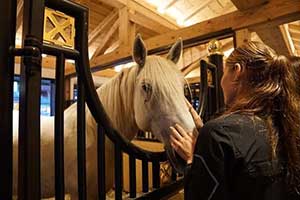
It is not uncommon for the heart rates of a loving couple or a parent and child to sync up during intimate moments. Researchers at the Italian University of Pisa Department of Veterinary Sciences designed an experiment to see if this phenomenon also occurs between humans and equines. The preliminary study – which will serve as a spring board for further research – consisted of eleven humans and one mare.
The human participants were asked to interact with the mare as follows:
- Part 1: The human sat still in a chair in a stall next to the horse’s stall.
- Part 2: The human continued to sit still in the chair, but the horse entered the stall with the human and could explore the human through sniffing and touching.
- Part 3: the human groomed the horse.
Read more: Study Suggests An ‘Emotional Transfer’ Between Humans & Horses
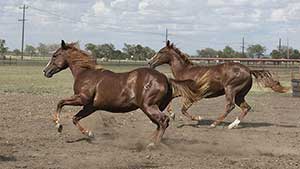
by Denise Steffanus
Think back to your first encounter with a horse. Were you warned that if you were afraid, the horse could smell your fear? It turns out that was good advice.
People emit a particular chemosignal while experiencing a specific emotion that induces the same emotion in another person who smells that odor. Chemosignals are chemical signals the human body gives off, primarily through sweat. Now researchers have found that horses also can smell human emotions.
Dr. Antonio Lanatá and his colleagues at the University of Pisa, Italy, have found that horses can smell fear and happiness. While these are just two emotions the researchers identified, further studies may reveal horses can pick up additional emotions from the body odors humans emit.
The researchers theorized, “We know that horses perform unexpected reactions when being ridden by a nervous person. This research background led us to suspect that the olfactory system of horses is likely to enable them to read human emotional states by means of the axial chemosignals humans emit.”
Read more: Can Horses Really Smell Fear? Yes, And That’s Not All
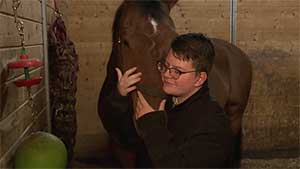
by Homa Bash
The bond between a boy and his horse is a sight to behold.
For 13-year-old AJ and his horse Addy — it is a bond that began three years ago.
One that AJ remembers with crystal clarity.
“We called his name, he came running up to us — didn’t even know who we were — came up and buries his face into my chest like, I’ll choose you. ‘I choose you.’ It’s almost like he said that to me,’” AJ said.
The bond made was extra special because AJ is on the autism spectrum and deals with severe anxiety and ADD. So much so that being in a classic school setting was a struggle.
“With the anxiety and just being a little bit different from everybody, it was just hard for him, and he got bullied quite a bit,” said mom Shelly Ochoa.
Read more: Boy with Autism Forms Incredible Bond with Horse After Being Bullied in School
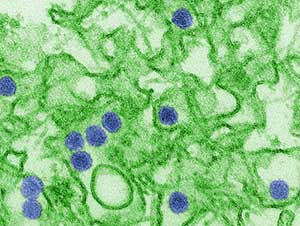
Horses can be infected with the Zika and Dengue viruses, researchers who carried out a study in the South Pacific report. A significant proportion of horses in New Caledonia and French Polynesia tested in the research were found to have mounted an immune response against the viruses.
The immune response to the Zika virus was found in 4.3% of the horses tested in New Caledonia and 15.4% of those tested in French Polynesia. Blood from 163 horses in New Caledonia was tested. Seven of those had mounted an immune response to Zika, and 130 had been tested from French Polynesia, 20 of which had delivered a positive result.
Read more: Horses can be affected by Zika virus, study shows
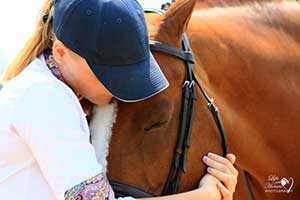
by Janice Byer
For many people, talking about mental illness can be uncomfortable and a stress ensuing experience. A lot of people don’t want to admit if they have been dealing with something or they don’t know how to help someone in their life who has been having difficulty.
Unfortunately, our Equestrian community is no different. When a rider has a physical problem, it is often visible to the world. Broken legs, sprained shoulders are discussed as people share their experiences and how they deal with the injury. Even concussions, which aren’t visible, are talked about freely.
However, mental illness is invisible. For many, it’s a case of, If you can’t see it then how can anything be wrong? For others it’s, No one can see it so they won’t believe me if I talk about it. We need to remove these statements from everyone’s minds and open up the conversation about mental illness. In doing so, we will not only help those who are suffering in silence, but also to stop the stigma that mental health shouldn’t be talked about.
Read more: You Are Not Alone: Mental Health in Our Equestrian Community
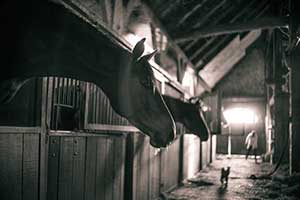
by David Nash, DVM
Horse owners worldwide were alarmed when reports of a new airborne Equine Influenza outbreak caused the British Horseracing Authority to suspend Thoroughbred racing in England on February 7, 2019.
Equine Influenza is a highly contagious disease that is spread between coughing infected horses, contaminated buckets, feed tubs, brushes, tack, etc. Symptoms include fever, coughing, and nasal discharge. Equine Influenza is caused by strains of the Influenza A virus, which is endemic in horses. The virus replicates inside of equine respiratory epithelial cells resulting in damage to tracheal and bronchial epithelial cells and respiratory cilia resulting in the respiratory symptoms seen in horses.
More alarming was the fact that previously vaccinated horses were not protected from the strain of Equine Influenza virus responsible for this outbreak. More than 2,000 horses were tested, 170 racing yards were placed under quarantine, biosecurity practices were now mandatory, and racing was allowed to resume under strict new guidelines issued by the British Horseracing Authority six days later. This disruption of racing cost millions of dollars in lost revenue, great cost to horse owners, and sent shivers down the spine of all horse owners wondering if they were next. But was this outbreak preventable?
Read more: Are Equine Infectious Disease Outbreaks Preventable? Are We Doing Enough?

by Beth Main
Connecting with a horse builds relationship skills in people with ADHD — and helps patients feel comfortable in their skin.
Living well with attention deficit disorder (ADHD or ADD) means more than managing symptoms and getting things done. We want to feel good about ourselves, control our emotions, and have healthy relationships, too. One problem with traditional talk therapy and ADHD coaching is that each requires a level of self-awareness that not all patients have. How do you teach someone without a filter to be less impulsive by talking about it?
How to Develop Trust and Connectedness
Equine Assisted Psychotherapy (EAP) is different. It’s an experiential process in which clients interact with horses — with the guidance of a specially trained mental health professional and an equine specialist — instead of talking about their problems.
- Colorado Women in Ranching: A spirit of nurturing, sustainability is alive at San Juan Ranch
- Do You Dare to Go Bare?
- Horse Health: Microchipping a Superior Form of Identification
- New Coat Colour in the Icelandic Horse
- Foal Q & A with Rood & Riddle’s Dr. Laurie Metcalfe
- The Equilume Light Masks Helps Pregnant Mares Foal on Time with Optimum Birth Weights
- Working with Horses to Develop Skills - Five Reasons Why It Works!
- Possible Link Between Selenium and Cribbing in Horses
- Lighting For Breeding and Performance
- Rider Biomechanics: Using Sensors to See How the Rider Influences the Horse (7:24)
- The Art of Seeing Lameness
- Wild Horses Can Re-balance The Ecosystem: Good For Outdoor Sports; Reduces Wildfires & Toxic Smoke
- Getting to the Point: Equine Acupuncture
- Equine Connection: International Horse Certification Course with Business Training
- Care of the Mare and Foal at Weaning
- Dental Basics: The Who, What, When, How and Why of Floating Teeth
- How Myofascial Bodywork Helps Horses
- The Effects of Routine Morning Exercise on Muscle Response
- Is the Great British Shire Horse About to Go Extinct?
- Red Light at Night Facilitates Recovery and Rest






